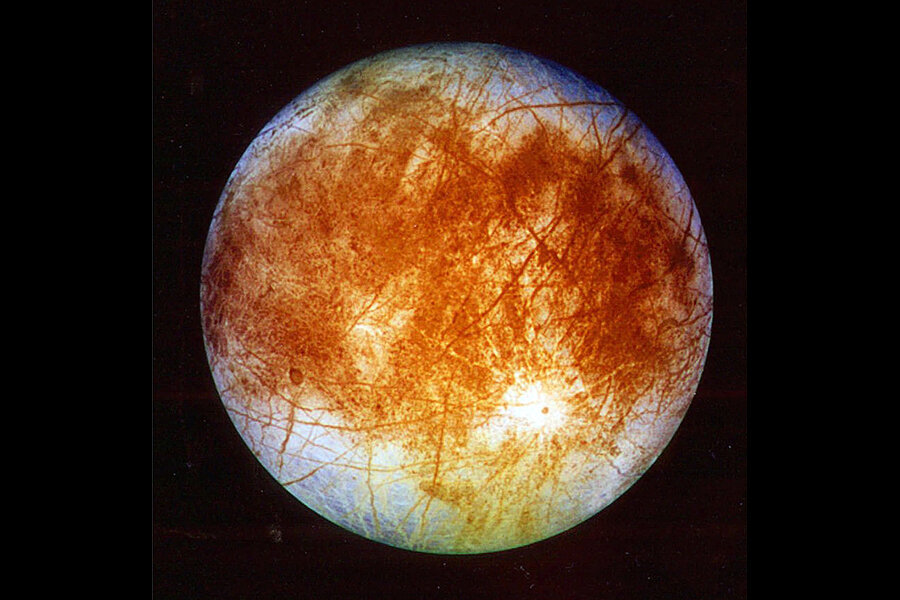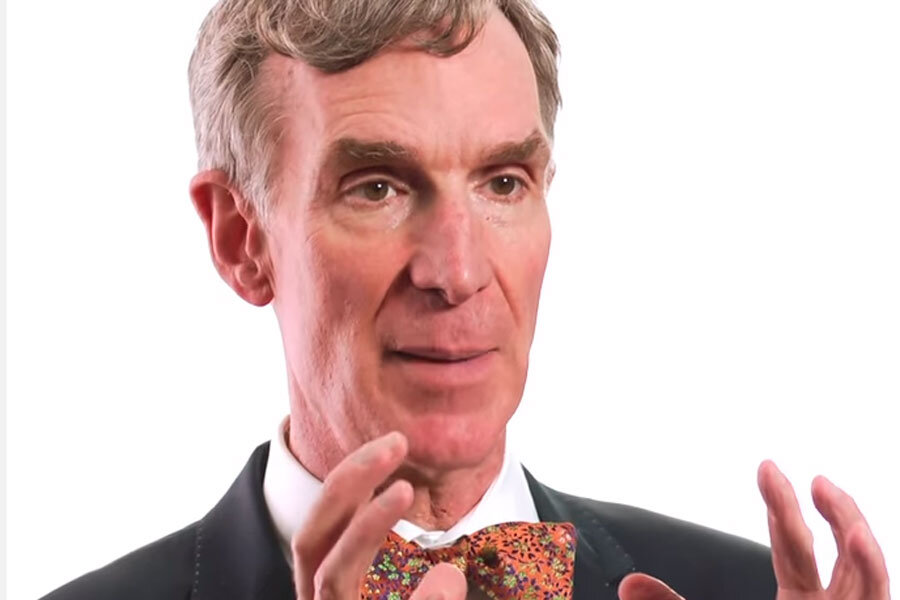Continents of ice? Evidence that Jupiter's moon Europa could be like Earth.
Segments of the ice crust of Jupiter's moon Europa appear to be pulled and pushed by the same basic forces that are rearranging the continents on Earth.
For astrobiologists, active tectonics is a welcome sign in the hunt for habitats. It joins other lines of evidence pointing to a moon with a heat source to support a liquid ocean and a slushy layer between it and the crust.
The notion that bold lines, subtle ridges, and other features on Europa's surface represented a frosty form of tectonics was proposed by scientists working with the Galileo orbiter when it beamed back the first close-up images of the moon early in its 1995 to 2003 mission.
"On Europa, they did see features that were very reminiscent of plates that looked like they had displaced," says Simon Kattenhorn, a senior structural geologist at the ConocoPhillips Company in Houston.
Still, the scientific case needed a stronger footing than "looks like," and Dr. Katternorn and Louise Prockter of the Johns Hopkins University's Applied Physics Laboratory in College Park, Md., set out a new analysis in this week's issue of the journal Nature Geoscience.
Previous research by Dr. Prockter had made "a very compelling argument" that Europa had the equivalent of Earth's mid-ocean ridges, along which magma wells up to form new crust, Kattenhorn says. On Europa, ice or slush would be welling up through the cracks.
In 2004, Katterhorn and colleagues published a paper on another Earth-like tectonic process on Europa: strike-slip faults.
But a crucial piece was missing: evidence for subduction – a way to get rid of the old crust to make way for the new. This is the evidence Kattenhorn and Prockter present in Nature Geoscience.
Using high-resolution images from Galileo of a 52,000 square-mile patch of Europa's surface, the pair worked backward from existing plate positions to reconstruct the region's configuration as it would have appeared a few million years ago. They used much the same approach geophysicists have used to reconstruct the shapes and locations of Earth's crustal plates as they would have appeared hundreds of millions of years ago.
Because subduction removes material from the surface over time, such backward-looking reconstructions leave blank spaces where the long-gone crust would have been, like a jig-saw puzzle a few pieces shy of complete. Sure enough, the two researchers found a 7,700-square-mile chunk of missing crust about 62 miles wide at its widest point. Its leading edge matched up with two features that the team identified from the images as two closely spaced subduction systems.
In addition, ridges, faults, and other linear features come to an abrupt end where one ice plate begins to dive under another along a proposed subduction system. The team also identified what look to be deposits of so-called cryolava – slush erupting gently over the surface from vents. These were arranged along one of the subduction areas, much like the volcanoes that dot the boundaries of the Pacific Ocean's "ring of fire."
In all, the two researchers identified eight lines of evidence for subduction on Europa, a process they renamed subsumption – since the vanishing ice may disappear from the surface because it is being subsumed by the warmer ice below.
Even before the new analysis, the notion of tectonics on Europa was perhaps the last explanation standing for the features on moon's surface.
Researchers have estimated that Europa's current surface is from 40 million to 90 million years old – one of the youngest surfaces in the solar system. New ice is forming where ice plates are being pushed apart by fresh slush reaching the surface, much like spreading zones along plate boundaries on Earth. In some locations these zones on Europa make up 40 percent of the surface.
But many questions remained unanswered. Normally, scientists would expect to see some way the crust was adjusting to the fresh material being added – contraction nearby or a rumpling of the crust into mountains, for instance. But they didn't see these.
Researchers had come up with several potential explanations for the discrepancy. For instance, the crust may be folding over long distances, making the folding hard to spot, or the outer shell may be getting thicker. But none of these explanations can plausibly account for the relatively rapid, wholesale repaving of the surface, Katterhorn and Prockter note.
The actual mechanism that drives subsumption on Europa is not clear.
On Earth, subduction happens because denser ocean crust grinds beneath more buoyant continental crust. It is then melted and returned to the surface at spreading ridges. But it's unclear if each plate of ice involved in the proposed subsumption activity on Europa has such a density difference.
In any case, solid ice is more buoyant than the warmer, softer ice underneath it, notes Michelle Selvans, a planetary scientist at the Smithsonian Institution's National Air and Space Museum in Washington.
"It is therefore unclear how subduction can physically occur on Europa," she writes in an essay that accompanies Kattenhorn's and Prockter's analysis.
Researchers are unsure how widespread any tectonic activity might have been and still might be. Last December, researchers reported detecting geysers erupting from Europa when it reached the farthest point in its orbit from Jupiter. The researchers noted that the geysers could be appearing along features known as linea – long fault complexes that are part of Europa's purported tectonic system. These are thought to open and close as Jupiter's gravitational tug varies during the moon's circuit around Jupiter.
Kattenhorn and Prockter note that Galileo images show features similar to the ones they studies at several other locations on Europa. These provide additional opportunities to see how widespread tectonic activity could be, they say.









